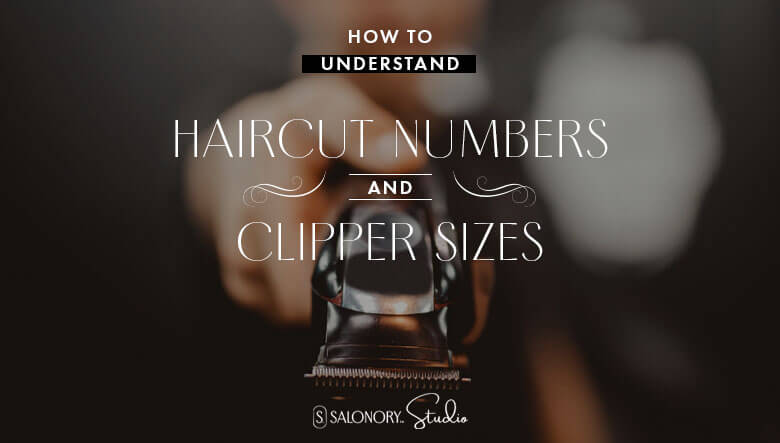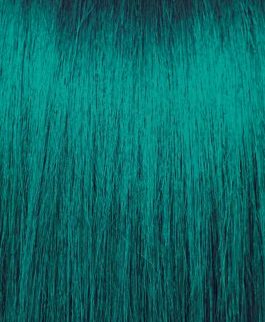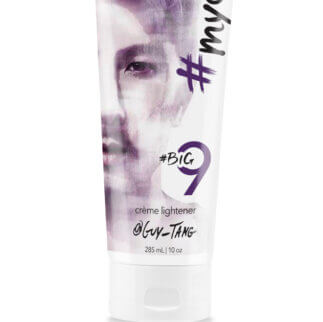Imagine the scene: A client confidently requests a “number 3 on top, fading to a 0 on the sides.” While they might sound like cryptic code, understanding these haircut terms is vital. But let’s be honest. Navigating the world of haircut numbers and clipper sizes can feel like deciphering hieroglyphics — even for seasoned stylists. Confusion about international systems, brand variations and the elusive “zero” setting can leave even the most confident barber feeling a flicker of doubt.
Fear not, fellow stylists! This comprehensive guide is here to unlock the secrets hidden within those numbers. In the following paragraphs, we’ll dive deep into the standard numbering system, unravel the mysteries of guards and levers and go beyond the numbers to understand how hair type and texture influence the final outcome. But that’s not all! We’ll also equip you with advanced techniques for creating flawless fades, mastering texturizing and layering and troubleshooting common challenges like unevenness and choppy cuts.
By the end of this journey, you’ll be wielding your clippers with the confidence of a seasoned pro, transforming haircut terms from confusing code to powerful tools for artistic expression. So, grab your clippers, stock up on STMNT Grooming Goods products, settle in and get ready to master the fascinating language of haircut numbers and clipper sizes. Your clients will thank you for it!
Demystifying Haircut Numbers
Remember the initial confusion when a client mentioned a “number 3 on top”? Let’s unpack the meaning behind the numbers and navigate the intricate world of clipper guards while addressing potential pitfalls.

The Standard Scale
Haircut numbers begin the widely used 0 to 8 numbering system, which represents hair length in eighths of an inch. Let’s take a closer look at each number:
Super Short
- #0 Haircut: Shaved close to the skin, ideal for buzz cuts and military styles.
- #1 Haircut: Slightly longer than a #0, leaving a faint shadow and a very short trim.
Short and Neat
- #2 Haircut: A quarter-inch length, good for taper fades and shorter buzz cuts with a clean, professional look.
- #3 Haircut: Three-eighths of an inch long, offering more hair while staying neat, popular for crew cuts.
Medium-Short and Versatile
- #4 Haircut: Half an inch long, providing more styling options and a less severe look.
- #5 Haircut: Five-eighths of an inch, allowing for textured cuts and brushing in different ways.
Longer Short Styles
- #6 Haircut: Three-quarters of an inch, offering a fuller look for short pompadours and slicked-back styles.
- #7 Haircut: Seven-eighths of an inch, good for maintaining length while keeping the hair manageable, often used for tapering.
Longest Clipper Guard
- #8 Haircut: One inch long, used for trimming longer hair and tapering the ends. Suitable for those who want both length and a clean look.
Remember that these are general guidelines, and the specific look achieved depends on factors like hair type, head shape and desired style. Also, keep in mind that even the seemingly straightforward can have twists. International systems might use millimeter measurements, and in your own country, different clipper brands can have slight variations. Familiarize yourself with your preferred brand’s system and double-check measurements rather than making assumptions.
Guards
These plastic attachments control hair removal by ensuring only a specific length gets trimmed. Use different guards for fades, tapers and layered styles and to achieve each client’s desired length. Don’t underestimate the “zero” setting! This guard-free setting allows for intricate details like sharp fades. Working without a guard requires a steady hand but allows for stunning results.
The Lever
The lever is your ticket to mastering subtle variations. Adjusting it within each guard refines your cuts. Imagine a dimmer switch – a slight turn creates seamless transitions from long to short, achieving that coveted “blended” look. Master this “lever dance” for precise, natural-looking cuts.
Beyond the Numbers
Always keep in mind that numbers are guides, not absolutes. Fine hair might require a shorter guard than coarse hair for the same visual length. Dense hair might benefit from starting longer and gradually thinning. Understanding these factors empowers you to adapt to individual clients.
Common Challenges and Troubleshooting Tips
No matter how well you understand haircut numbers and clipper sizes, no barber or stylist is immune to problems. Fortunately, knowing what causes common challenges can help you overcome them and deliver amazing results for your clients.
- Unevenness: This can occur due to inconsistent pressure, incorrect guard attachment or lever movement. Ensure even pressure throughout the haircut, double-check guard attachment and practice smooth lever transitions.

- Choppy Cuts: This might be caused by using the wrong guard for hair type/texture, not blending sections properly or using the lever abruptly. Choose the right guard, use clipper-over-comb techniques for blending and adjust the lever gradually.
- Missed Transitions: This typically happens when switching guards without blending or using the lever incorrectly. Blend sections meticulously when changing guards, and practice smooth lever movements for seamless transitions.
- Inaccurate Length: Double-check the numbering system you’re using, including any brand-specific variations. Be mindful of hair type/texture influencing visual length, and adjust accordingly.
Mastering haircut numbers is an ongoing journey, not a destination. Embrace the nuances, adapt to individual clients and unleash your artistic vision. Now, equipped with a deeper understanding and troubleshooting tips, you’re ready to tackle more advanced techniques.
Advanced Clipper Techniques with Numbers
Mastering the fundamentals of haircut numbers and clipper guards unlocks a world of artistic possibilities. Now, let’s explore some advanced techniques that elevate your artistry and transform simple haircuts into stunning masterpieces.
Fades and Tapers
Fades and tapers are where haircut numbers truly shine. By strategically combining different guards and lever adjustments, you can create smooth, seamless transitions that add depth and dimension to any cut.
A fade isn’t a one-size-fits-all style. Here are the most popular fades and how to achieve them:
- High Fade: Starting with a high number like 7 or 8 on top, use guards 5 to 3 with subtle lever adjustments to create a smooth transition down to a zero at the neckline.
- Mid Fade: Start with a number 5 or 6 on top, transitioning through guards 3 to 1 for a defined yet blended fade. Finish with a zero at the ears.
- Low Fade: This bold look starts with a number 3 or 4 on top, blending seamlessly through guards 1 and 0 to a clean fade line just above the ear.
- Skin Fade: This is the ultimate fade and starts with any number on top and transitions through progressively smaller guards (including decimals) to achieve a completely bald finish at the bottom.
The lever is your secret weapon for fine-tuning transitions. For a softer fade, use the closed lever position with each guard change. Open the lever slightly as you move down towards the shorter guards for a sharper fade. Practice smooth lever movements to avoid choppy transitions.

@drizzyxgroomer via Instagram powered by Squarelovin
And here are the most popular tapers and how to do them:
- Classic Taper: Starting with a longer guard at the top (e.g., number 3), gradually decrease guards by one with closed lever positions to gently decrease hair length toward the neckline.
- Drop Fade Taper: A drop fade taper is similar to a classic taper but has a sharper transition near the bottom. Use the lever technique mentioned above for a defined “drop” effect.
- Disconnected Taper: Experiment with bold disconnections by using significantly shorter guards for the sides and back while maintaining a longer length on top. Blend the top section into the shorter sides using clipper-over-comb techniques and the lever for a seamless finish.
Texturizing and Layering
Numbers go beyond fades and tapers and empower you to add texture and movement to any haircut. Imagine wispy layers framing the face or textured sections adding volume and definition. You can achieve these effects by strategically using specific numbers and techniques.
Texturizing
Choose a guard slightly longer than desired. Use point-cutting shears over the clipper to remove random sections within the guard length. Experiment with different lever positions to vary texture intensity.
Alternatively, use thinning shears over a slightly longer guard to remove bulk and add subtle texture throughout the hair.
Layering
- Sectioning: Divide your client’s hair into manageable sections for precise layering.
- Number Progression: Start with a longer guard at the bottom, and gradually decrease guards by one as you move upward through each section.
- Blending: Use clipper-over-comb techniques and adjust the lever for smooth transitions between layers. Aim for a natural, seamless flow rather than harsh lines.
Creative Applications

@juliuscaesar via Instagram powered by Squarelovin
Once you’ve mastered the techniques above, get creative! Here are just a few of the unique looks you can achieve:
Mohawk with Faded Sides
Start with a high number on top and gradually decrease guards towards the sides for a seamless fade.
Undercut with Textured Top
Use a low fade (starting number 3, transitioning to 1 and 0) and combine it with a slightly longer, texturized top section (achieved with point cutting or thinning shears over a number 4 guard).
Disconnected Styles
Play with contrasting lengths and fades. Use a short guard for the sides and back and a much longer guard for the top, blending the connection with clipper-over-comb techniques and lever adjustments.
Practice makes perfect. Grab your head mannequin (or a brave volunteer!) and experiment with different combinations.
Tools and Resources
Conquering the world of numbered haircuts requires the right tools and resources. Here are the hair supplies you’ll need to master these cuts and keep your customers coming back for more:

High-Quality Clippers
Invest in reliable clippers that offer:
- Sharp blades: Regular maintenance and blade replacements ensure clean, precise cuts.
- Comfortable handling: Choose clippers that fit your hand size and weight preference for fatigue-free use.
- Adjustable lever: This crucial element allows for fine-tuning within each guard length.
- Variety of Guards: Make sure you have a complete set of guards, including decimals for intricate fades. Consider additional specialty guards for texturizing or specific styles.
Visual Aids
Charts and diagrams depicting numbered lengths and lever adjustments serve as handy references — especially for newer stylists.
Online Resources
Explore tutorial videos, articles and forums dedicated to haircutting techniques. Watch experienced stylists demonstrate advanced maneuvers and gain valuable insights.
Continuing Education
Workshops and classes focused on advanced techniques can help you refine your skills and introduce you to new trends. If you attend in-person classes, you’ll also have opportunities to network with other stylists and learn from their experiences.
Above all else, your most valuable resource is practice. Experiment with different combinations on mannequins or willing clients to build confidence and develop your unique style. Embrace challenges as opportunities to learn and refine your craft.
Also, consider investing in a camera or app to document your work. Taking before and after pictures allows you to track your progress, showcase your skills to potential clients and identify areas for improvement.

@drizzyxgroomer via Instagram powered by Squarelovin
Closing Thoughts
Remember that initial trepidation when faced with a client requesting a “number 3 on top, fading to a 0”? This article has replaced that trepidation with confidence that you could totally nail their desired look. You’ve explored the mysteries of haircut numbers, mastered the control offered by guards and levers and uncovered advanced techniques for fades, tapers, texturizing and layering, so you should have the knowledge you need. However, this is just the beginning. Consider this the first chapter in your ongoing mastery of numbered haircuts.
By mastering the language of haircut numbers and clipper sizes, you’ve unlocked a powerful toolset. You can confidently approach any haircut request, knowing you have the technical skills and artistic vision to transform a client’s desire into reality. A haircut is more than just changing hair length. It’s about enhancing appearance, boosting confidence and creating a unique expression of individuality. As a stylist, you can use your newfound mastery to empower your clients and elevate your art form.
So, go forth, fellow stylists, and conquer the world of numbered haircuts! Experiment, create and let your artistic vision shine through. Remember that the journey never ends and that with each new client, there’s a new opportunity to learn, grow and leave your mark on the world.
Image Credits
LightField Studios/Shutterstock.com
Happy Art/Shutterstock.com
Ds_vector/Shutterstock.com
bsd studio/Shutterstock.com
YAKOBCHUK VIACHESLAV/Shutterstock.com
Michelle Aleksa/Shutterstock.com
Parilov/Shutterstock.com























Share Your Feedback